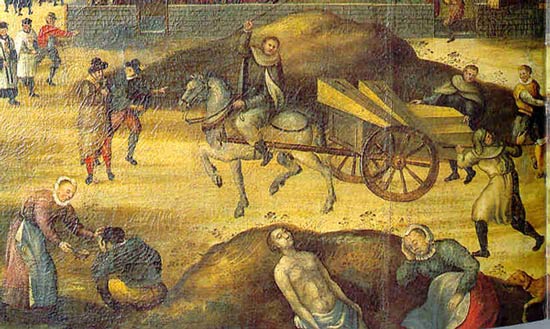EPIDEMICS
In every kind of environment, from the inside of a cell to an entire ocean, microbes, humans, and other species interact in unique ways. Any changes in that environment, those produced by natural causes, such as drought, or human activities, such as land clearing, can upset the balance of species.
In some cases, new conditions may benefit microbes causing infectious disease, allowing them to multiply rapidly and increase the risk of exposing humans who share that environment.
Discovering why and how the microbes are spreading an infection opens the way to responding to the problem.
An epidemic hits a population, develops, and dies. It disappears either because of a cure, or everyone without immunity dies. In this way parts of population have disappeared again and again throughout history. Diseases come into existence, change, and vanish. And some have always been with us.
Most diseases are the result of change in our environment and in our behaviour. AIDS has been promoted by promiscuous sexual practices and a global transportation system. This increase of travel has brought about the transmission of many diseases from one continent to another, even centuries ago. Ships hastened the spread of Black Death and smallpox, and airplanes have increased the spread of newer diseases. Increasingly dense masses of humanity have made a rich target for the fast spread of disease.
What promotes epidemic?
High population density
Newly inhabited areas
Increased travel
New generation without immunity
Mutation in microbe
Over use of antibiotics
Poverty / poor sanitation or hygiene
Change in human activity
Change in eating habits
Substance abuse
Change in sexual habitsWhat stops epidemic?
Observe and define symptoms
Isolate victims
Identify microbe
Identify carriers
Identify mode of transportation
Implement preventative measures
Implement cure
Worldwide disease surveillance and communication
Epidemic : A sudden outbreak of an infectious disease that spreads rapidly through the population, affecting a large proportion of people
Pandemic : Epidemic disease, so widely spread that vast numbers of people in several countries are affected
Epidemiology : Study of how epidemic disease is spread or transmitted with particular regard to the prevention and control of epidemics
Endemic : Describes a disease that is generally or constantly found in a place or population
Ecdemic : Describes a disease that is not generally found or unusual in a place or population
